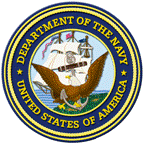United States Department of Defense

United States Navy: Publications
Date of this Version
2-19-2019
Abstract
Chairman Visclosky, Ranking Member Calvert, and distinguished members of the Subcommittee, thank you for the opportunity to appear before you today on behalf of the United States Naval Academy (USNA). The Naval Academy’s mission is to develop midshipmen morally, mentally and physically and to imbue them with the highest ideals of duty, honor and loyalty in order to graduate leaders who are dedicated to a career of naval service. I am pleased to report to you today that USNA is succeeding in its mission, in no small part due to the support of Congress and this year’s on-time appropriation, thanks to the hard work of the members and staff of this very subcommittee. Notably, in 2017 Forbes Magazine listed the Naval Academy as America’s top public college, while in 2018 USNA ranked fourth, behind UC Berkeley, the University of Michigan, and the United States Military Academy. Highlights from the recently graduated Class of 2018:
An overall graduation rate of 87.9%, well above the DoD requirement of 75%, the third highest in USNA history. Both male and female graduation rates exceeded 86% and for the first time in USNA history, the minority graduation rate exceeded the caucasian graduation rate. Furthermore, each of the major demographic groups (gender, race, ethnicity) graduated at rates exceeding 85%. I believe these statistics speak not only to the quality of USNA’s incoming midshipmen, but also to the hard work of our faculty, staff and coaches, and the inclusive environment in which we work, educate and train.
Varsity athletes graduated at a 90.2% rate, over 3% higher than non-varsity athletes, and one of the highest in the country – a testament to USNA’s commitment to the full development of student-athletes.
76% of the Class of 2018’s newly commissioned ensigns graduated with Science, Technology, Engineering and Math (STEM) degrees, exceeding the Chief of Naval Operations’ requirement of 65%.
Within the Class of 2018, we had one Rhodes, one Marshall, one Knight Hennessey (Stanford), one Schwartzman, and 15 other prestigious scholarship winners.
The Naval Academy assesses these graduation trends as positive, and attributes them to the effective developmental programs and processes that stem from the initial admissions process and continue through the 47-month education and leadership development experience.


Comments
RELEASED BY THE HOUSE APPROPRIATIONS COMMITTEE SUBCOMMITTEE ON DEFENSE